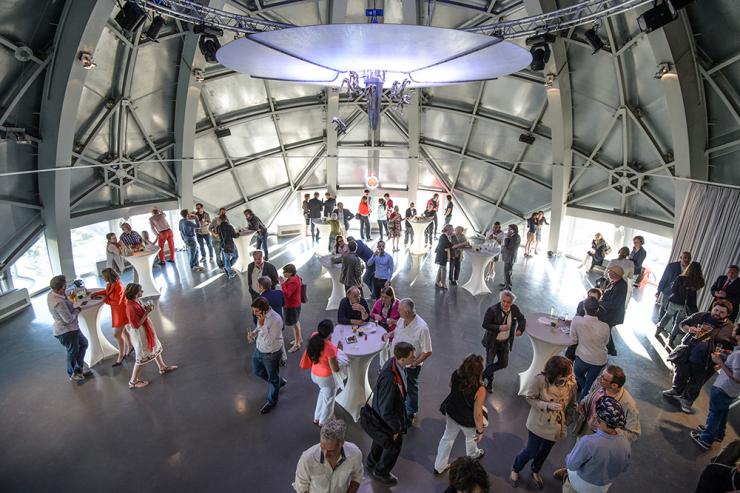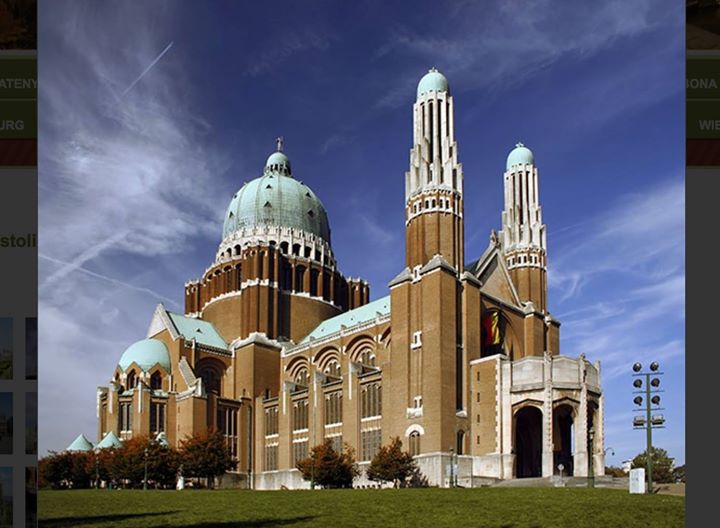Brussels July 9-11 2018
After Leuven, I drove SW to see Waterloo (West Walloon) and then went north to finally arrive in Brussels.
In the 16th century, Brussels was connected to the sea by a canal and the old port zone had many industries along with it. The southerly 1832 Canal de Charleroi carried coal and minerals from Charleroi in south Hainaut Province and joins the Canal de Willebroek at Sainctelette, which then continues to the ocean. Tour boats are available to make the trips.
VICTOR HORTA (1861 Ghent -1947 Brussels)
He was an architect mostly remembered for his daring, light-infused art nouveau buildings using trademark elements of wrought iron and glass. He trained under Alphonse Balat who designed the greenhouses in the Royal Park at Laeken, superb examples of construction work with glass, iron, and cast iron. Horta was fascinated by the architectural potential offered by these materials, which had become considerably cheaper with the advent of industrial production in the 19th century. Slim metal columns connected to arches or lintels were used to replace load-bearing walls both inside and outside. Staircases were often surmounted by a glass skylight that introduced light into the heart of the home. He also designed furniture to compliment the rooms to make them a total ‘work of art.
His once-celebrated Maison du Peuple was torn down in 1965 but surviving masterpieces include Rue Américaine 25, now Musée Horta and Grand Magasin Waucquez, now Centre Beige de la Bande Dessinée (the comic strip museum), along with Horta’s truly art ouveau house, the 1893 Hôtel Tassel and his first civic commission, the charming Jardin d’Enfants in the Marolles, which still functions as a schoolhouse.
Horta’s WWI exile in England and the USA marked a transition in styles – gone was sensuous art nouveau and in its place was his clean-cut, functional interpretation of art deco. From 1922 to 1928, Horta designed the bold but severe BOZAR, while his last major work was the disappointing, rather drab post-art deco Bruxelles-Central train station (completed 1952 after his death).
His buildings comprise one World Heritage Site.
EAST OF BRUSSELS
Sonian Forest (Foret de Soignes). Southeast of Brussels is this flat, large track of mature forest crisscrossed by hiking, biking, and horse trails.
Chateau Val Duchesse. On the north edge of the forest is this chateau, originally a priory of Dominican nuns founded in 1262 by the Duchess Aleyde de Iralat and abolished in 1796. The remains were acquired in 1903 and the old priory dwelling was modified by an architect into the current chateau. In 1915, the outbuildings and a colonnaded gallery at the front were added.
Today, the complex is owned by the Belgian government and regularly used for political summits as well as for important guests of the federal government. It is private and can’t be entered. Good views of the complex are visible from the locked steel gates.
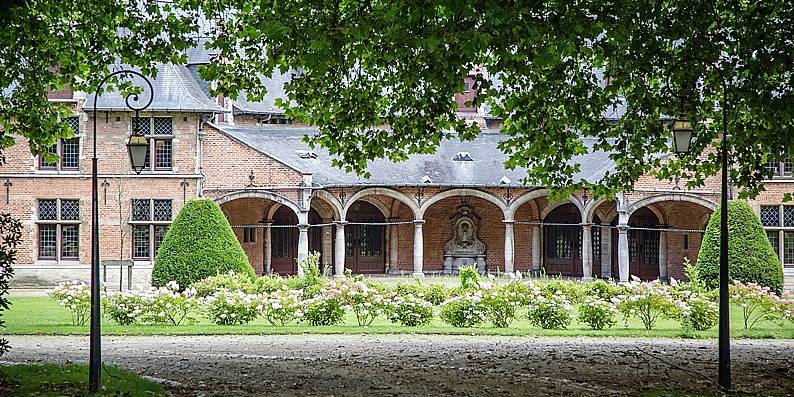
Palais Stoclet. Not a castle or palace, it is really a large house on a residential street in Tervuren, built-in 1911 as an early premonition of art deco – I assume the reason it is listed as a World Heritage Site. The architect was instructed to produce a Gesamtkunstwerk (“total work of art”). It is radically geometric with rectangular lines and a flat roof. The exterior is clad with rectangular limestone? panels that give it a very modern look. The nicest feature is the tower crowned with several copper statues. The rooflines, some of the windows, and the windows on the tower are bordered by an ornate brass/copper molding that has tarnished copper blue where most weathered, and the exterior walls are stained by the copper. The small grounds are simple white gravel with several ornamental shrubs.
This must be one of the more unusual WHS as it is not open to the public, appears to be a private residence, and has no signage to indicate anything about it.

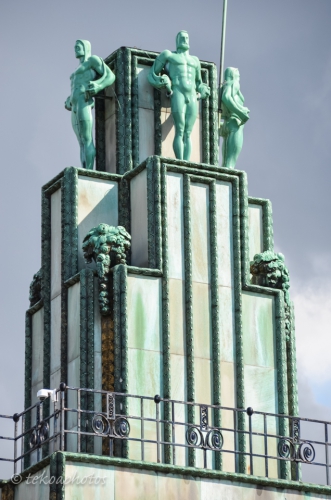
CINQUANTERNAIRE
The Cinquantenaire is the huge triumphal arch reminiscent of the Arc De Triomphe built to celebrate Belgium’s 50th anniversary in 1880 but wasn’t completed until 19005. It is a grand structure with several copper statues on top. In the summer, it forms the backdrop to a drive-in cinema screen. Around it is several grand-scale museums.
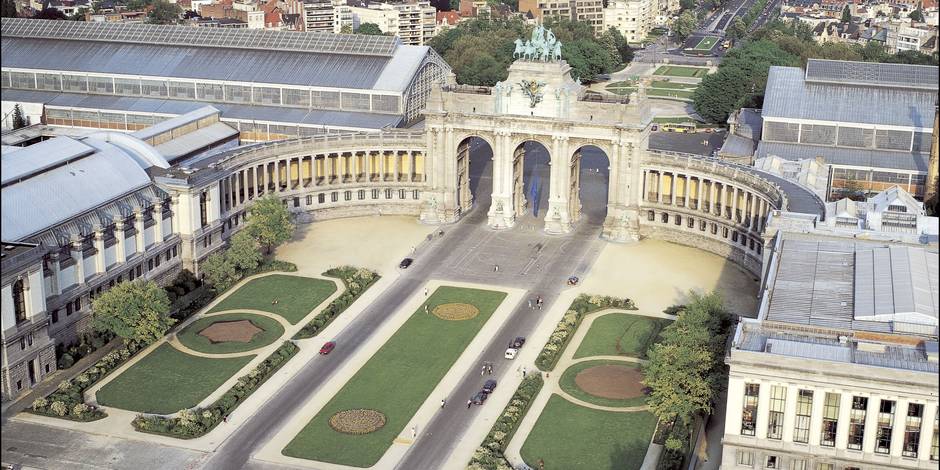

Royal Museum of the Armed Forces and Military History. Great for military buffs, this houses an extensive array of weapons (the guns and swords are displayed as round decorative features), uniforms, vehicles, warships, paintings, and documentation dating from the Middle Ages through to the 20th century. Listed as Free in the LP, it cost €4. Note that the last admission is 4 pm.
Museum of Ciquanterre. The building is labeled the Museum of Art and History. This huge collection is reminiscent of the British Museum and ranges from ancient Egyptian, a 420 Roman Syrian mosaic, Meso-American to wooden bicycles and can prove overwhelming. Labeling is only in French and Dutch so the English audioguide is useful. Despite arrows indicating the entrance, it appeared closed and I walked all over trying to find it.
Hotel Van Estvelde (1895-1901). The outside is not gripping but the interior is a Horta masterpiece with exotic timbers and a central glass dome infused with African-inspired plant motifs. The owner, Baron Van Eetvelde was Minister for the Congo and the country’s highest-paid civil servant. It is not open to the public.
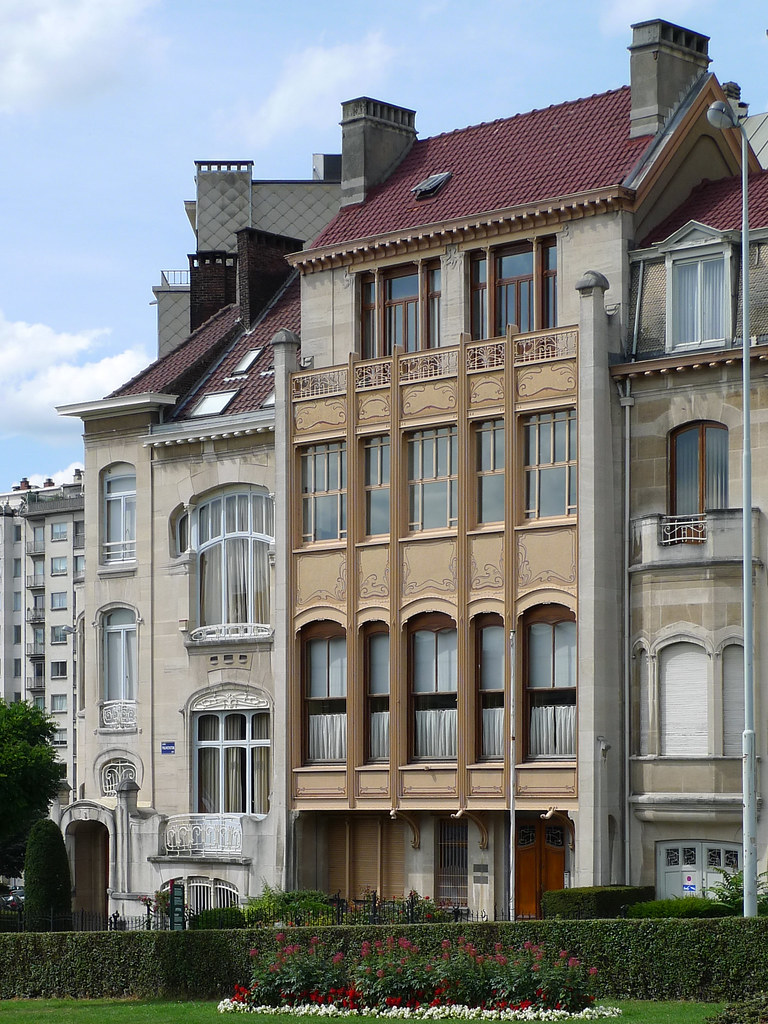

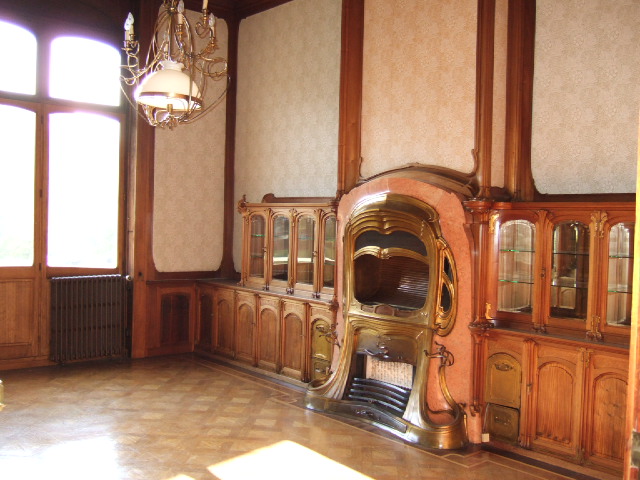
My first main day in Brussels was a Monday when almost all museums are closed so I tried to go everywhere that was open. I purchased the 3-day Brussels Card that gives entrance to 40 museums for €42. Adding the metro was another €18. I initially didn’t think it was a smart buy but eventually, it more than paid for itself on days two and three, because I visited so many places. Most museums are closed on Monday, some are only open from 2-5 and close during lunch so watch the times in the LP.
I ‘wild camped’ all three nights at Docks Brussel, a large, very nice modern shopping center north of the center. There are a few free parking spots on the street with spaces always available in the evening. It was quiet and a McDonalds open from 07:00 to 23:00 was inside.
Koezio. This is an NM ‘things to do’ indoor amusement park at Docks Bruxsel where I slept for all three nights. There are several challenging adventures with physical obstacles to overcome and clues to follow to discover the “enigma”. €26
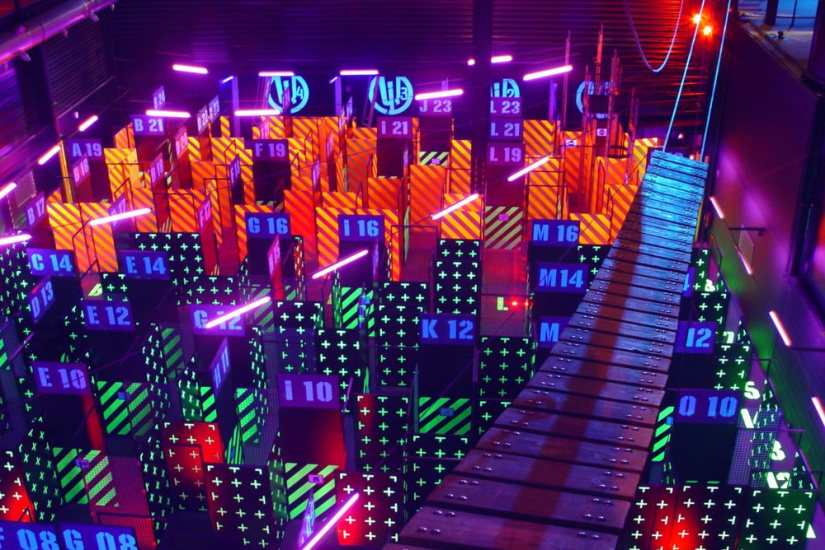
HEYSHEL & LAEKEN. This is a district in north Brussels.
Domaine Royal. This huge park contains a trio of palace-villas that are home to Belgium’s ruling family. All are out of bounds to tourists except for 2-3 weeks a year when it is possible to visit the Royal Greenhouses designed in 1873 by Alphonse Balat (Horta’s teacher), but they are the one part of the palace quite visible from the road. The construction was an engineering marvel of its day and contain many fabulous and rare tropical species.
Deceased Belgian royals are laid to rest in the crypt of the splendid, triple-spired church of Notre-Dame de Laeken. In getting here I drove around the lengthy brick wall topped with razor wire and parked for a few minutes in front of the black and gold main gate to get a glimpse of the main chateau.
Atomium. The space-age Atomion looms over 102m over Brussel’s north suburbs. Constructed for the 1958 World’s Fair, it consists of 9 – 18m diameter metallic balls linked by 18m steel tube columns 3.3m in diameter, containing an elevator (in 1958 was the fastest in the world at 5m/second), escalators and stairs. The balls are arranged like school chemistry set to represent atoms in their crystal lattice, except these are 165 billion times bigger. It has become an architectural icon receiving a makeover in 2006 (the original aluminum cladding was replaced with stainless steel. Each ball has displays about the construction, the world fair, and an art exhibit on Magritte, one of the most famous Belgian artists. At night the spheres are lit. €11.50 with a €3 reduction for Brussels Card. It would have been cheaper to buy the combined ticket with Mini-Europe!
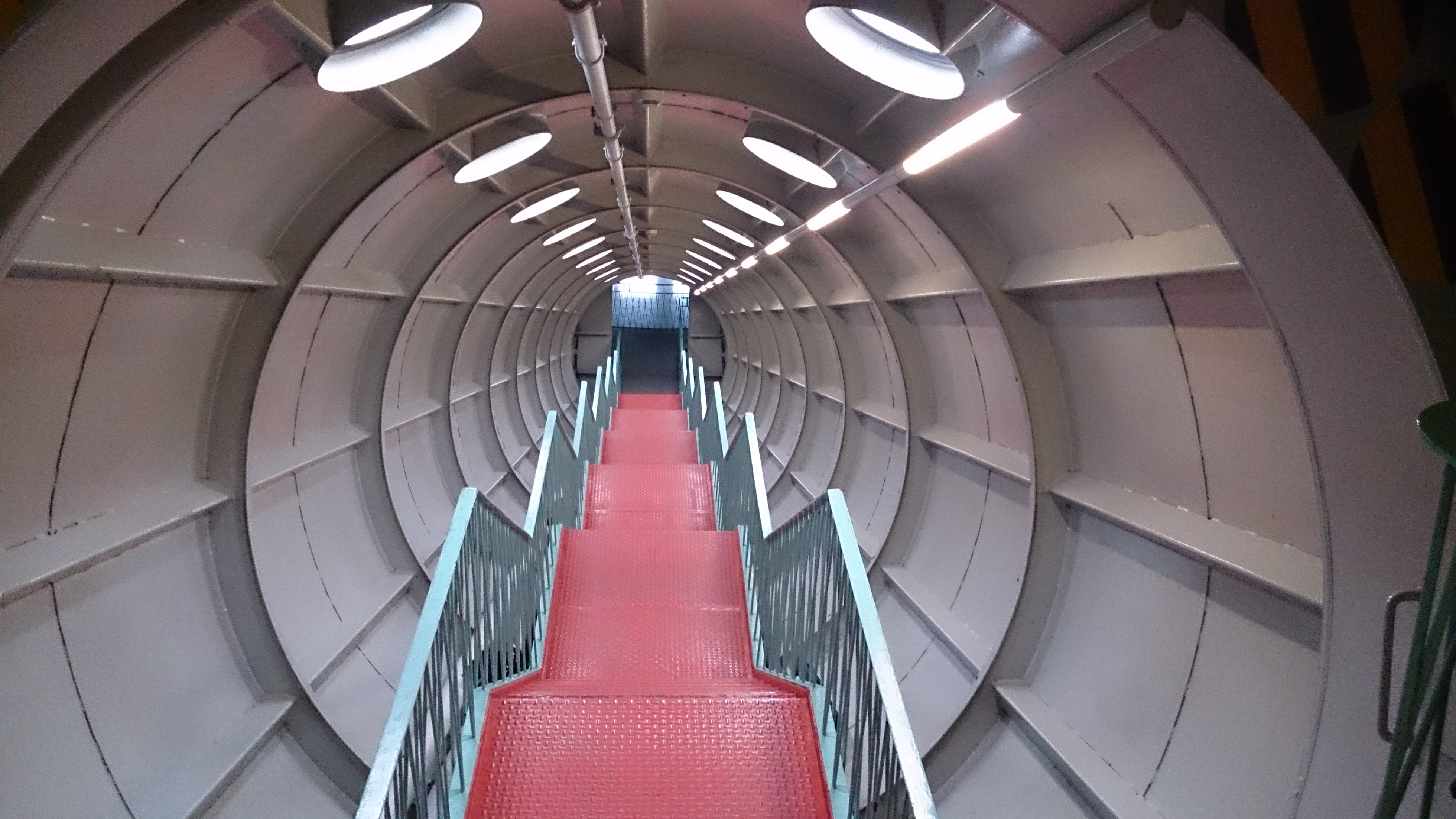 The ticket includes free admission to the nearby Palais du Centenaire, a 1930 art deco masterpiece.
The ticket includes free admission to the nearby Palais du Centenaire, a 1930 art deco masterpiece.
First take an elevator 93m to the viewing platform, then back to the bottom to ascend via escalators and stairs through each ball.
Mini-Europe. Next door to Atomium, this is an amazing place with scale model iconic buildings from virtually every country in Europe. The buildings selected were carefully chosen in 1987, massive research done for the model makers, 55 workshops from 9 countries constructed the models (first made of wood and cardboard, then a silicone mold was made that was filled with epoxy resin to give the final result – this results in exceptionally fine detail and excellent weather resistance). For example, the Cathedral de Santiago de Compostela took 24,000 hours of work. The excellent booklet gives all the facts about the country and each building. The 1:25 models are superb, have many electrically powered features, and are mixed in with canals with boats and railways with toy trains. €13.50 with no reduction for age or Brussels card, but well worth it.

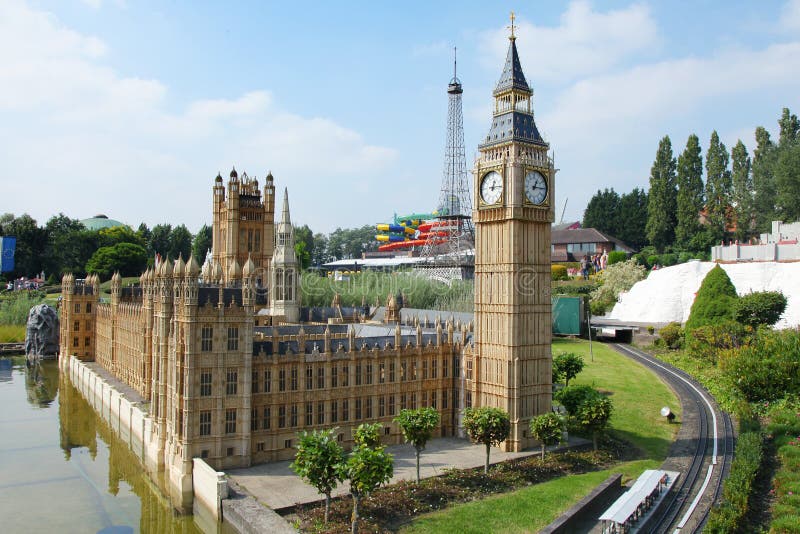

KOEKELBERG AREA
National Basilica of the Sacred Heart. This monstrous brick church (the fifth largest in the world and the world’s largest art deco building) has a very modern appearance with a sterile interior. Construction started in 1905 for a planned neo-Gothic church but because WWI left state finances impoverished, this 1925 redesign shaves off most of the intricate details. Finally completed in 1969, it has some attractive stained glass but otherwise is a white elephant of dull brown brick. For €5 take the elevator up 53m to the panorama balcony surrounding the massive green dome. There was a lot of modern art inside including a big exhibit on Joshu Genku. It is NW of the city center.
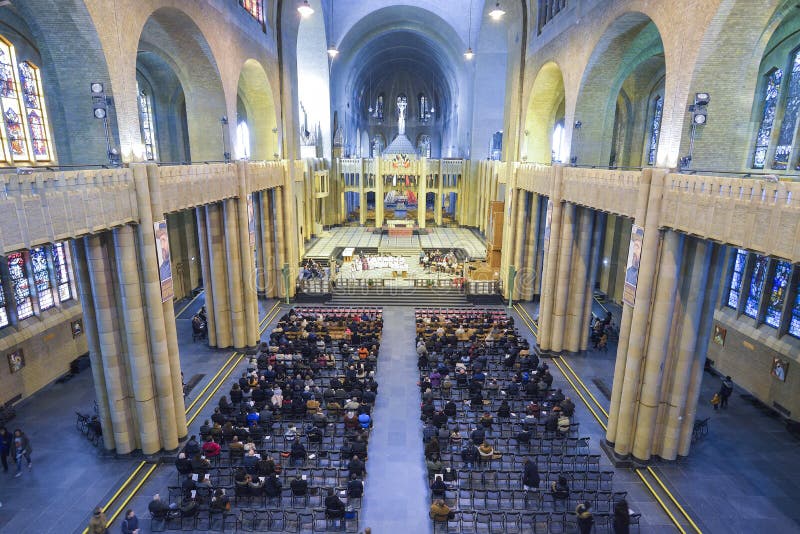
SABLON & MAROLLES These are two neighborhoods just south of the center. Sablon is a cobbled square with antique shops and chocolatiers and the Marolles quarter is a working-class neighborhood with pockets of original Brussels around the Place du Jeu-de-Balle.
Palais de Justice. Larger than St Peters in Rome, this 2.6-hectare complex of law courts was the world’s largest building when constructed (1866-83). The front was covered in scaffolding and stringent security had to be passed to get in, but it is an overwhelming place in its immensity, full of huge columns, grand staircases, and stone embellishments. The massive central foyer rises to the top of the dome. Behind the building is a terrace with wide panoramas over Brussels with the Atomium and Kochellberg Basilica the standouts. A glass elevator leads down to the Marolles district.


This is a great place to park on the terrace with lots of spaces. Walk east to Grand Place and pass the following: (I passed the Jewish Museum and Museum of Costumes and Lace but they were closed on Monday, and I saw them on Tuesday).
Jewish Museum. The permanent displays on the Holocaust and Jewish life in Belgium were being renovated, but the exhibit was on Amy Winehouse. It is a nostalgic look at the Jewish girl from north London curated by her sister. Her ancestors arrived in England after the pogroms of the late 1800s. There is information on her family, childhood, tattoos, videos on her early music career, clothing, guitar, and a sound booth to sing along to her music but nothing on her struggles with drugs or death. Free with BC
Jardin d’Enfants (Ecole maternelle Catteau-Horta). This was Horta’s first civic commission. It still functions as a school and has a mosaic on the right side “Kindertrun”. The outside is an austere cream and grey stone with a wrought iron/glass canopy over the door. The doors and windows have a gently arched top. It is open to the public from 12-12:30 and 13:30-2 pm. There was little to see by looking into the windows except for some industrial-looking aluminum lighting fixtures.
GRAND PLACE. This WHS is one of the world’s most unforgettable urban squares. It is entered from six narrow side alleys. The focal point is the city hall but each of the antique guildhalls (most dates from 1697-1705) have their own charm with baroque gables, gilded statues, and elaborate guild symbols. Only one is used by its original guild. The rough cobblestone square is surrounded by classic cafes and there is always a mass of people, many in small tour groups. It looks different at different times so try to come more than once – at night it is illuminated. Going around the square counter-clockwise, starting on the north are the following guildhalls:
North – Maison du Boulangers (baker’s guildhall, now the Café Le Roy, has a gilded bronze bust above the door of St-Aubert, the bakers’ patron saint), La Brouette (grease makers guildhall, faint gold wheelbarrows above the door with statue of St-Gilles, the patron saint of grease-makers), Le Sac (cabinet-makers, ornate), La Louve (archers, golden phoenix on top signifying the rebirth of the Grand Place of its bombardment by the French in 1695, relief of Romulus and Remus), Le Cornet (boatmen, stern-shaped gable, the name refers to the horn on the façade), Le Renard (haberdashers, statue of fox above the door).
West – Hôtel de Ville (the 15th-century town hall is the focal point of the square. It was almost the only building to escape the 1695 French bombardment. The stone façade has gargoyles and hundreds of statues. The intricate 96m spire is topped by a gilded statue of St Michel, Brussels’ patron saint. There is a wide courtyard easily accessed), L’Etoile (the smallest, star on top, where city hero Everard ‘t Serclaes died in 1388, the north wall on Rue Charles Buls, has his 1902 reclining corpse that rubbing brings good luck, lovely 1899 art nouveau plaque dedicated to the city by the appreciative artists), Le Cygne (butcher’s guildhall, carved swan above the door, Karl Marx wrote the Communist Manifesto here in 1847, the best restaurant in the square at bottom), L’Arbre d’Or (brewer’s guildhall and still the Belgian brewer’s headquarters, Brewery Museum in the bottom, gold reliefs of branches around the columns, hop plants climbing the bottom of the columns, relief of hops above the windows).
South – Dukes of Brabant Mansion (takes up the entire south side, six 1698 houses sit behind the single palatial 1882 façade).
East – Chaloupe d’Or (dressmakers’ guildhall, now a splendid café), Le Pigeon (artist’s guildhall, Victor Hugo lived here during his exile from France in 1852), Maison du Roi (directly across from Hotel on the east side is this large, neo-Gothic masterpiece. Originally a medieval bread market (200 years younger than the surrounding guildhalls, it an 1873 rebuild), the stone is much darker than the other buildings and covered with statues and mini-spires. It houses the Brussels City Museum, with its collection of old maps, architectural relics, and paintings showcasing the history of the city. €4 Free with BC
I walked north to this bar and then on my way back to the Palais du Justice, passed Manneken Pis.
L’Archduke. This tiny blue-painted bar/jazz club a few blocks north of Grand Place is housed in the 1837 Maison Fondée. It has live music Saturday and Sundays at 5 pm featuring Jean Louis Hennart Family & Sa Formidable Equipe. Inside is a lovely intimate space with a grand piano in the middle of the floor and a balcony encircling it all above. The prices were expensive.
Manneken Pis. 3 blocks west of Grand Place, this fountain statue is of a little boy taking a leak. The statue is very small and has become a national symbol of Belgium – the real statue is in the City Museum. The small intersection is thronged with tourists.
On day 3, I returned to this area and saw:
Musée de Costume et de la Dentelle. Near Grand Place, there were 3 exhibits: weird and exotic clothes by the designer Tony Deschamps (the shoes alone were worth coming for), wire art on the top floor, and the permanent exhibit on lace. Lace has been one of Flanders’ finest crafts since the 16th century. While kloskant (bobbin lace) originated in Bruges, haaldkant (needlepoint lace) developed in Italy but was predominately made in Brussels. Luxury textiles are also presented. There are many fine examples of this extraordinary craft with examples from all over Belgium in pulling our drawers. A video shows bobbin lace and after watching it, I did not have a clue how they did it. Free with BC
Tuesday, July 10 was a big day in central Brussels. I parked all day next to the cathedral and didn’t get a ticket, walked everywhere and saw the following in order. Everything was covered in the Brussels card.
CATHEDRAL AREA
Cathedrale des Sts-Michel & Gudule. Host to coronations and royal weddings, this grand, twin-towered cathedral was begun in 1226 but took 300 years to complete. The highlights were: great stained glass, column saints, the enormous wooden pulpit by Hendrik Verbruggen (Adam and Eve driven out of Eden by skeletons), and ornately carved wood confessionals.
Centre Belge de la Bande Dessinée. Housed in a Horta classic masterpiece (wrought-iron superstructure and a glass roof), the comic strip museum gave a great introduction to the production of comic strips. But these are only European comics, of which I had only heard of a few, and all the ‘scripts’ are in French. There are several displays on the building that was the main interest for me. It is a 5-minute walk north of the cathedral.
PLACE ROYAL AREA
Bruxell Central Train Station. Horta’s last building, it is a sterile, modern-looking building with little interest.
Galleries Royal St Herbert. This is a gorgeous, 2-block long shopping arcade with high-end stores and a high glass roof. At night the ceiling is lit in a colorful show.
Mont des Art. A large public square in the center of this area, Google Maps took me to the semi-circular end – there were two statues of Albert I (1875-1934; r.1909-34; great copper statue on a horse, died in a climbing accident) and his wife Elizabeth (1876-1965; stone statue).
Jan Mot Gallery. A fine art gallery, it is next to the lovely Kleine Zavel Square with manicured hedges, a great fountain with statues of Egmont en Hoorne. Around the fountain are 10 other statues and the whole square is surrounded by copper statues on columns.
Great Synagogue of Belgium. Inaugurated in 1878, this Romano-Byzantine white stone edifice is flanked by two towers. The gable has the Star of David and the tables of the law. The sober inside is decorated with sculpted elements and the polychrome apse is adorned with many Jewish religious symbols. It was not open and there was no sign with opening hours. The stained glass looked lovely with a large rose window with many Stars of David.
On the way to Le Toison ‘Or, I passed through the lovely 1.5-hectare Egmont Park with large grassy areas and statues of the Prince of Ligne and Peter Pan.
Le Toison ‘Or. This large street divided by a central median (a great Neptune statue with water gushing out of his backpack stands just where I crossed the street) is a main shopping street of Brussels with many high-end stores.
Musée Magritte. This is the world’s largest collection of surrealist pioneer paintings and drawings. His style developed from colorful cubism in 1920 through a Dali-esque phase and a Kandinsky-like brushwork to the trademark bowler hats of the 1960s. About half the work was on loan to the San Francisco MoMA and replaced by paintings of Nicholas Party. Magritte was a wonderful artist and had an unconventionally conventional life. This museum adjoins the Fine Arts Museum.
Musées Royaux des Beaux Arts. This fine arts museum has three sections: Old Masters, Modern Art, and surrealists. I very much enjoyed the Fin d’Siecle portion in galleries -5 to -8, and started into the Old Masters section (but missed the Flemish Primitives, Brueghal, Memling, Reubens, and Van Dyck that I do like) but left to avoid the Renaissance and religious art that I don’t really enjoy.
Musée des Instruments de Musique. In the wonderful Old England Building (1899 former department store is an art nouveau showpiece – all steel girders and a wrought iron stairwell that goes around the glass elevator climbing to great views at the restaurant on the 10th floor. The outside is black wrought iron and arched windows). The Musée has an incredible collection of more than 2000 historic instruments from all over the world. The labels are all in French and to get the best experience, use the app that allows you to hear most instruments being played.
Musée BELvue. In a former royal residence, this museum explores Belgium’s history from independence to today.
Coudenberg. Coudenberg Hill was the site of Brussel’s original 12th-century castle that was transformed over the centuries into one of Europe’s most elegant palaces, most notably the 16th-century residence of Holy Roman Emperor Charles V. The vast complex was destroyed in a 1731 fire and is now seen as an archaeological exhibit seeing the old foundations of the subterranean area under Place Royal. Enter the main building, and pass through the chapel, go down a medieval street (Rue Isabelle), see Aula magna (the banqueting hall) and the Museum in Hoogstraeten House. It has little atmosphere. Enter through Musée BELvue and emerge near the Old England Building.
Palais Royal. This huge 19th-century palace remains the official residence of the Belgium royal family, but who now lives at Laeke. You cannot visit it but only view it from the outside. One unique room has a ceiling iridescently clad with wing cases of 1.4 million Thai jewel beetles.
BOZAR. Housed in a 1922-28 art deco Horta masterpiece, I have never been to a museum so screwed up in its organization. The tickets are sold across the street, there are no signs directing you anywhere, the 4 exhibits all have separate tickets, the locker where you must store your pack has a coat hanger symbol on the door, not a pack (and a screwing combination system – I wonder how many people forget their locker number and personally set combination), and the labels under all the photos in “Resist! the 1960s Protests” section are poorly done (French and Flemish in the Belgium and France ones, but English in the ones on America and South Africa and you have to search through each one to find the English). As a result, I had a real walk-about just to get to the first gallery but had a chance to see large parts of the beautiful building – for which there is not a word. Other exhibits are thousands of stuffed toys by the artist Charlemagne Palestine and some unattractive modern art.
On day 3 in Brussels, I had a huge drive-around day to see places widely separated by distance (too far to walk to) or were closed on Monday and ended up visiting almost every part of the city.
De Vaartkapoen Sculpture. On the SW corner of a busy intersection in west Brussels, this 1985 small black statue by Tom Frantzen is from a Belgian comic book and shows a Belgian policeman in free-fall with arms outstretched and his right ankle being grabbed by a man emerging from a manhole cover.
Belgian Chocolate Village. Incongruously open at 9 most of the year, it is 10 in July and August, this museum tells the whole story of chocolate and what it means to Belgium – with much less detail than Chocolate Story in Bruges. What are special are the large chocolate recreations of Atomium, National Basilica, and Cinquantenaire. There is a real cacao tree and the ability to see pralines being made. There were no free give-aways of chocolate.
La Founderie Muséum of Industry. In a foundry owned by the Campanie des Bronzes (1854-1970), there is a room of old metalworking machines and products made of metal (printing presses, sewing machines,). This foundry also made pipelines for gas and electricity, light fixtures, and decorative items like chandeliers and gates. All is in French or Flemish and one is given an English “book” that is difficult to follow and gives too much detail. Upstairs is a good WWI exhibit in English that tells the social issues of the war especially pertaining to women. Pregnancies caused by rape were not dealt with humanely.
Erasmus House. In the SW suburb of Anderlecht (he was originally from Rotterdam), is this wonderful 3-story brick house that he stayed in for only 5 months in 1521. Erasmus was a famous humanist and writer who believed that one had to be familiar with ancient Greek and Roman texts and philosophers to understand the Bible and then thought it right to follow a true pastoral vacation in the spirit of Christ. He trained as a monk, was ordained in 1492, and then wrote against the excesses of monasteries, the church, and politics. He wrote Pause of Folly (1505), Adages (proverbs and quotations from classical literature) several other books, and 3000 letters, several of which he wrote to Luther.
The house is wonderful with wood floors and beamed ceilings, furniture, sculpture, paintings, and wooden statues.
Van Buuren Museum. In a 1928 art deco house, this exquisite museum has 5 rooms of furnishings, stained glass, and 5 centuries of art. The outside is red brick with high peaked gables. It was closed for renovations of both the house and gardens.
Porte de Hal. For centuries, Brussels was surrounded by an 8km long fortress wall that was partially removed in the 1700s and then demolished altogether on Napoleon’s orders in 1810. A few parts have survived, including Porte de Hal, one of the 7 imposing 14th-century gatehouse towers. The French used it as a prison and then it was converted into a museum in 1847, embellished with statuary, windows, and turrets.
Now there are exhibits on several of the floors: miniatures including some exotic dollhouses, religious art, weapons, and a great wood carving of St George. Climb to the 6th floor to see sort of panoramas, as the only views are through very narrow arrow slits. Free with BC
Musée Horta. Horta built this house and studio for himself in 1898, the beginning of the art nouveau movement. He extended it to the rear adding a sewing room, a dressing room, and a terrace with a winter garden. On his return from the USA in 1919, he sold both and the studio became a middle-class home. The local municipality bought the house in 1961 and opened it to the public in 1969. The studio was bought in 1963 but could not be renovated until 1989. The house next door was purchased in 2016 to house the administrative areas of the museum.
Climb the magnificent stairs to wonderful individual rooms furnished with mostly originals. He had great style – akin to Gaudi – almost. Then tour the studio. Each room was not labeled and it all got a little confusing. Free with BC
Musée d’Art Fantastique. About 5 doors down from Musée Horta, in what looks like an ordinary Ixelles townhouse, it is a jumble of rooms full of cyborg body parts, Terminator heads, and vampire cocoons, then let you electrocute a troll. This is only open on Saturdays and Sundays from May to September.
Musée Constantine Meunier. This townhouse was the last home and studio of this Brussels-born artist (1831-1905). The collection is many of his later works. He was best known for emotive sculpture and surrealist paintings: bronzes depicted muscular miners from Hainaut, dock workers from Antwerp, and men reaping fields. Due to a strike of Belgian rail workers, the employees couldn’t get to work and the museum was closed on July 10 and 11th.
Hotel Tassel. Horta designed this 1893 private residence signaling the beginning of art nouveau. The elegant bow windows enhanced the spatial layout. Can’t enter as private.
Musée des Sciences Naturelles. In the EU area, With more than the usual collection of stuffed animals, there is a good selection of rocks in the geology exhibit, the human evolution part is well done but has a confusing layout, I’m not interested in the human anatomy/physiology section and lots on dinosaurs. Free with BC
Musée Antoine Wiertz. Housed in his home, Wiertz (1806-65) was a Brussels artist who painted giant religious canvases depicting hell and other frenzied subjects. Free
Parliamentarium. This museum tries to explain the European Union through multiple multimedia exhibits. I found it all very confusing and never knew where to go next. Hold your media guide to stations to activate either audio or written explanations. Free
It is possible to visit the actual parliament, the Hemicyc in Strasbourg where laws are made and see democracy in action.
I then finished the day by returning to the center area and seeing Musee du Costume et de la Dentelle, the Jewish Museum, and Jardin d’Enfants.

